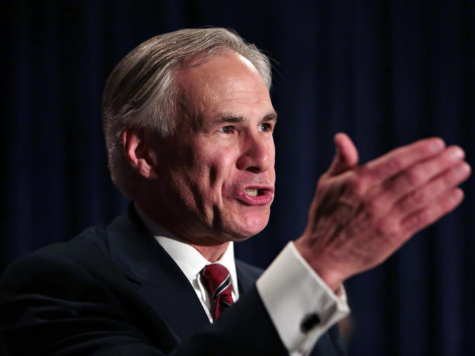DALLAS, Texas — Making college more affordable by reducing the crushing burden of student loan debt and increasing on-time graduations, transferrable high school tocollege AP credits, block scheduling, and online college learning opportunities, were among the cost-effective, common sense approaches GOP gubernatorial candidate and Texas Attorney General Greg Abbott served up on the higher education front at the University of Texas at Dallas on September 2nd.
“We must help every Texan climb the ladder of success,” Abbott told the crowd when unveiling the last of his Educating Texans – Higher Education plan.
Unlike his liberal opponent Sen. Wendy Davis (D-Fort Worth) who proposes bankrolling higher education through the taxpayer’s wallet or Democratic Lt. Governor candidate Sen. Leticia Van de Putte who suggests funding it through the Texas “Rainy Day” emergency fund, echoing Big Education’s approach, Abbott introduced plans that fostered personal responsibility, a characteristic trait that serves students well in the subsequent workplace.
Block scheduling of classes, for example, was one way Abbott put forth to accommodate students working their way through college. These days, block scheduling is more frequently seen in Texas high schools. This would also be a natural progression for undergrads.
“About half of all college students in Texas attend school part-time while working jobs to help pay for their education. To help more students attain a two-year associate degree while working or raising a family, I propose block scheduling for all two-year degree programs. Students can take their classes in blocks of time morning, afternoon or evening blocks so they will have more time available to work,” Abbott said.
Abbott then addressed the challenge of transferrable community college credits, acknowledging that a two-year post secondary education is often only a stepping stone for students who finish up with a four-year university degree. It is not productive when those course credits do not transfer over. He said, “That’s a waste of their time and it unnecessarily adds to their tuition expense and debt burden. To lower the cost of higher education and to expedite it, we must make core freshman and sophomore courses more consistently transferable between our community colleges and our public colleges and universities.”
Another idea in his plan was online college and massive online open courses (MOOC). Although MOOCs have received mixed reviews, not yet living up to their potential and have even been criticized for being pricier than college classes, Abbott told reporters that the University of Texas at Austin was a model for other schools on such a program. He pointed out that at UT-Austin, “It costs $1,400 less per student per semester. If you multiply that out, it means more than $10,000 in savings per college career.”
With today’s K-12 students increasingly using the internet in and out of class, online higher education is an affordable and comfortable option for some to consider. Abbott said,”The current model of higher education is still largely centered around brick-and-mortar classrooms where an educator teaches a limited number of students for a specified amount of time on a specific schedule. Digital learning allows students to progress based on competency rather than seat time, saving time and money. We must increase online college learning opportunities and count successful completion of those courses toward degree requirements.”
Other features of Abbott’s plan called on the Legislature to provide funding to exempt military veterans and their family members from higher education tuition; and holding universities accountable so students graduate on time with viable degrees that will be helpful to them as they venture out into the real world.
Fed Led Education’s push has been a numbers game, unrealistically insisting that everyone must go to and pushing everyone through the college sieve as Breitbart Texas reported. Abbott takes a different stance.
He said, “We also need to look beyond just the number of degrees awarded. We also need to look at the number of degrees awarded in critical fields, the cost of those degrees and even the employment rate of graduates.”
Not everything in the plan is a new like the Texas Competitive Knowledge Fund, intended to create more public universities on a top tier or “Tier One” level in the state. Both Abbott and Davis support Tier One, although Abbott proposed infusing another $40 million to support faculty and incentivizing research at key Texas universities.
Abbott commented, “as much as Texas rightfully brags that we’re better thanCalifornia, there is one area where California ranks above Texas. Four of the top ten ranked public universities are in California. None are in Texas. Thatmust change. We have the resources, the business partners and the people to elevate higher education in Texas to the best in the nation. We just needcommitment. I’ll make that commitment.”
He emphasized that the flagship campuses at UT and Texas A&M should be ranked among the top three in nation, rounding out a list of emerging top notch in-state public research universities with the University of Houston, Texas Tech, and a host of UT’s at Dallas, Arlington, El Paso and San Antonio.
Abbott added “I will work with all of them to recruit the best talent, to develop partnerships with the private sector and to elevate their national research standing.”
Follow Merrill Hope on Twitter @OutOfTheBoxMom.

COMMENTS
Please let us know if you're having issues with commenting.